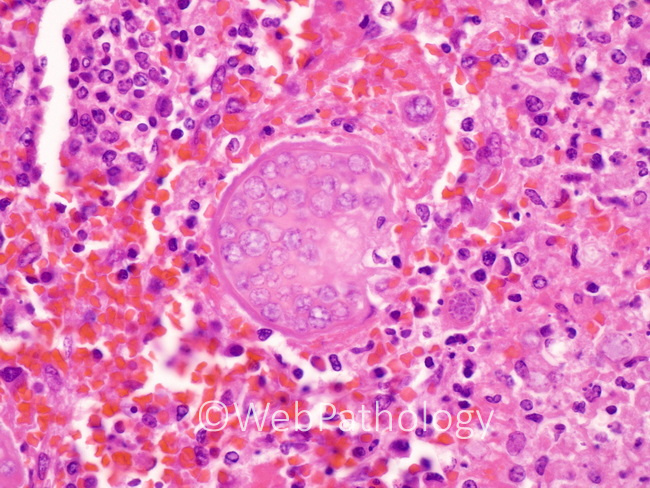Coccidioidomycosis : Introduction


Comments:
Introduction: Coccidioides spp. are pathogenic, dimorphic, soil fungi that cause Coccidioidomycosis (aka Valley Fever or San Joaquin Valley Fever). It is common in the desert regions of southwestern US, Mexico, and Central and South America. Other dimorphic fungi include Blastomyces, Histoplasma, and Paracoccidioides. The fungus cycles between mycelial forms in the soil (saprobic phase) and endospore/spherule forms in the mammalian host (parasitic phase). The two known species are Coccidioides immitis and Coccidioides posadasii which are morphologically identical but with a slightly different geographic distribution.The image shows a mature, rupturing spherule releasing numerous endospores. The site of infection was spleen.


